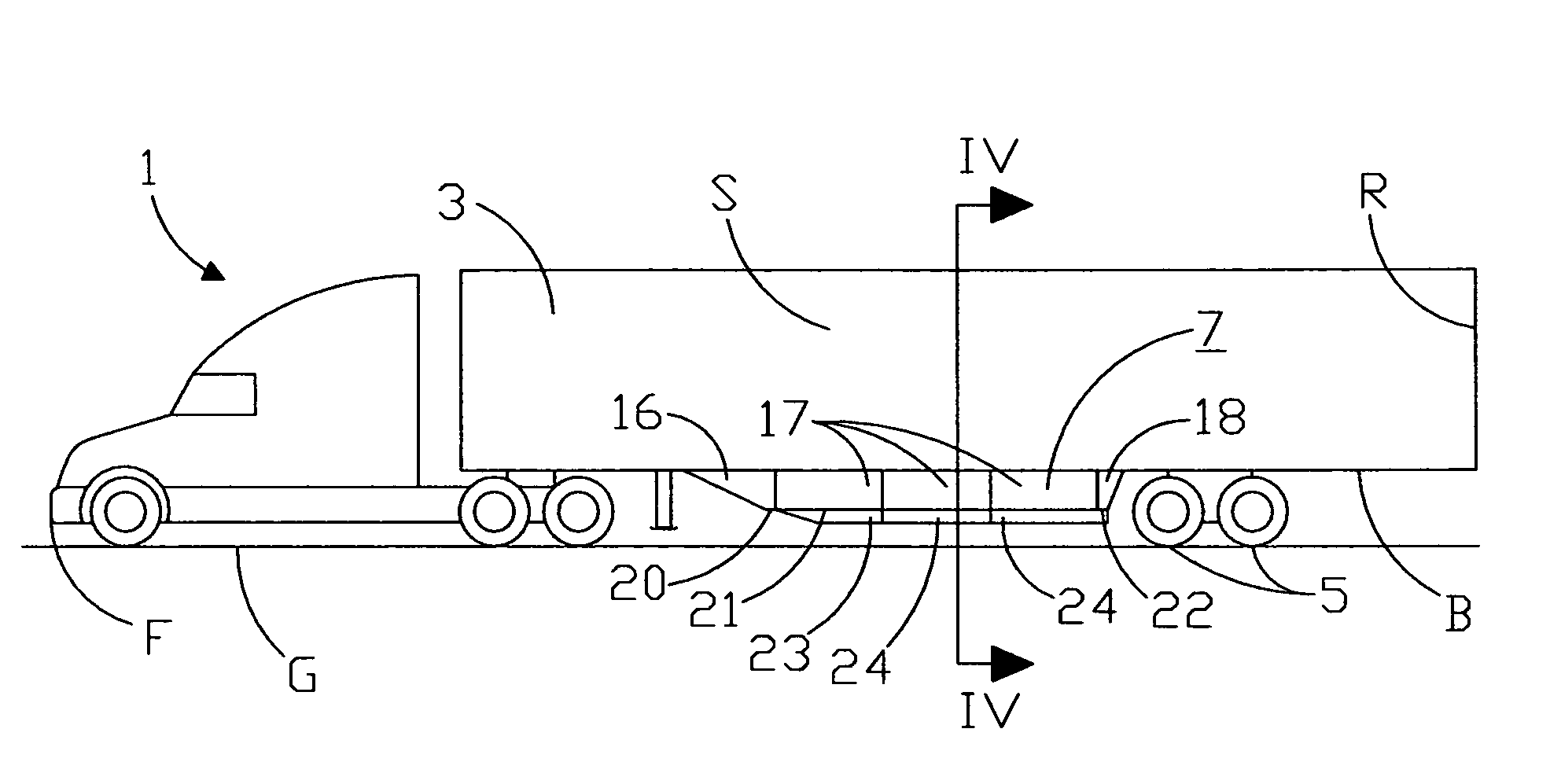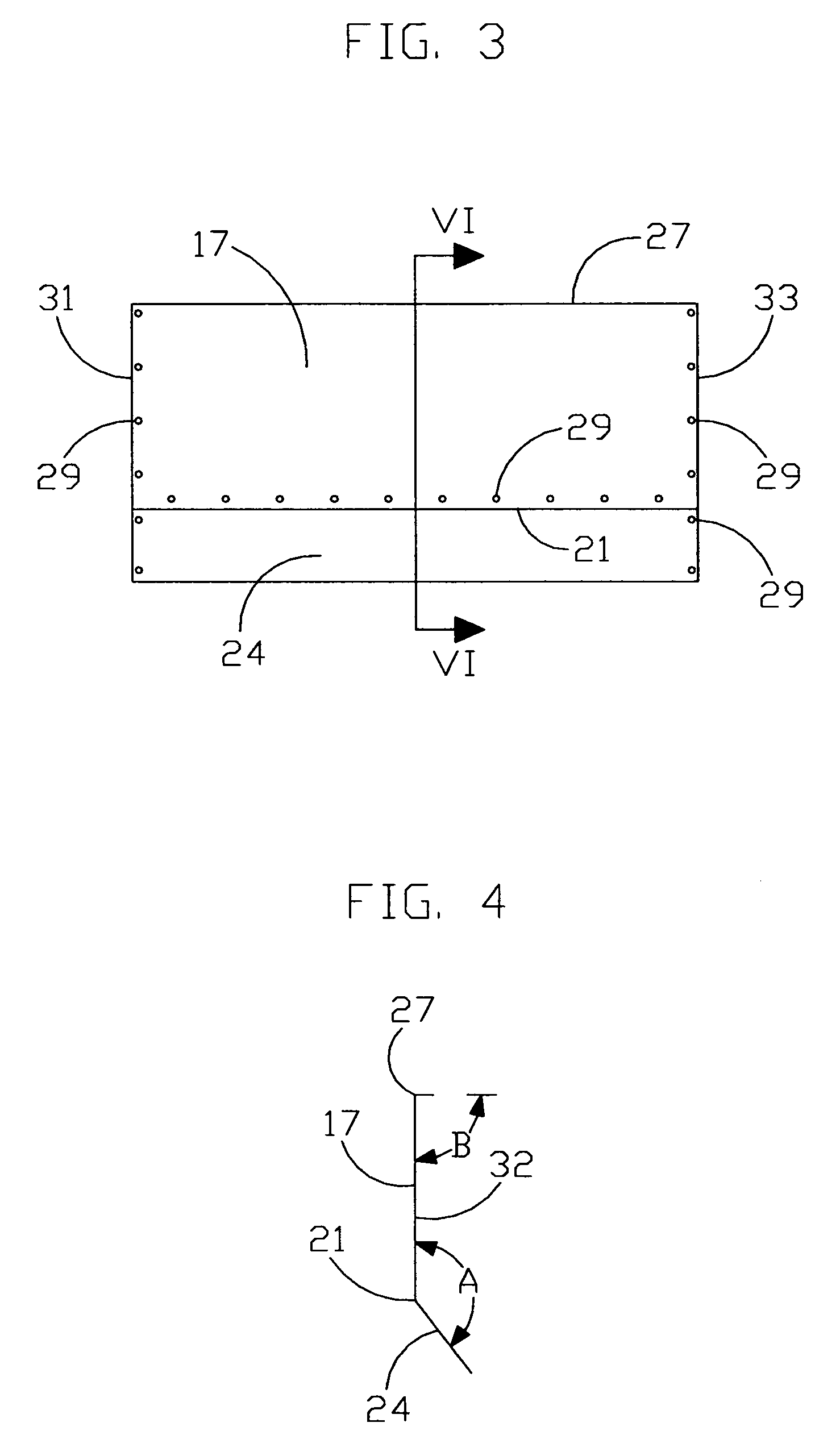Device for reducing vehicle aerodynamic resistance
a technology for reducing vehicle aerodynamic resistance, which is applied in the direction of roofs, vehicular safety arrangements, transportation and packaging, etc., can solve the problems of reducing the aerodynamic resistance of moving vehicles, saving fuel, and impracticality of streamlining the undercarriage of long vehicles such as semi-trailers, so as to reduce the aerodynamic resistance of vehicles and reduce the effect of vehicle aerodynamic resistan
- Summary
- Abstract
- Description
- Claims
- Application Information
AI Technical Summary
Benefits of technology
Problems solved by technology
Method used
Image
Examples
Embodiment Construction
[0015]Referring now to the drawings in detail and in particular to FIGS. 1 and 2, there is shown a vehicle 1 such as a trailer truck, having a generally rectangular body 3 having a front F, rear R, bottom B and opposed sides S mounted above rear wheels 5 and a device 7 for reducing the aerodynamic resistance of the vehicle 1 when it moves. The device 7 comprises a pair of opposed airfoils 9 disposed beneath the rectangular body 3 adjacent its sides S and are preferably made of aluminum, but of course other material could be utilized. Each opposing airfoil comprises load bearing struts 13, which are removably attached to the vehicle cross members 15. The load bearing struts 13 having predetermined dimensions are designed to carry loads from different directions and absorb impact from side collisions. They are shown fabricated from strips of flat sheets bent and joined to form a triangle. Opposed flat sheets 16, 17 and 18 are attached to the load bearing struts 13 adjacent the sides S...
PUM
 Login to View More
Login to View More Abstract
Description
Claims
Application Information
 Login to View More
Login to View More - R&D
- Intellectual Property
- Life Sciences
- Materials
- Tech Scout
- Unparalleled Data Quality
- Higher Quality Content
- 60% Fewer Hallucinations
Browse by: Latest US Patents, China's latest patents, Technical Efficacy Thesaurus, Application Domain, Technology Topic, Popular Technical Reports.
© 2025 PatSnap. All rights reserved.Legal|Privacy policy|Modern Slavery Act Transparency Statement|Sitemap|About US| Contact US: help@patsnap.com



